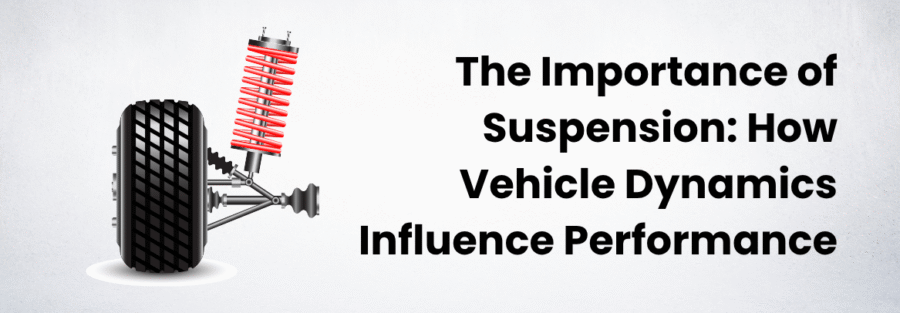The suspension system plays a vital role in defining a vehicle’s ride comfort, handling, and overall performance. Acting as the bridge between the chassis and the road, it manages load transfer, absorbs shocks, and maintains stability across varying driving conditions. Understanding how suspension geometry and dynamics influence vehicle behavior is fundamental for both engineers and performance enthusiasts.
At Caliber Technologies, we specialize in Multibody Dynamics (MBD) and parametric suspension modeling to help automotive teams design and optimize vehicle performance virtually. Using industry-leading simulation tools such as ADAMS, CarSim, CarMaker, Simpack, and MotionView, our engineers create detailed digital models that accurately represent real-world vehicle behavior. These high-fidelity simulations allow for rapid evaluation of ride, handling, and durability, enabling teams to fine-tune suspension geometry, control strategies, and kinematic parameters before building physical prototypes. The result — faster development cycles, reduced testing costs, and vehicles that deliver exceptional stability, comfort, and performance on the road.

1) Fundamentals of Vehicle Dynamics
Vehicle dynamics refers to the study of how vehicles behave in motion, particularly in response to forces acting upon them. Key aspects of vehicle dynamics include:
- Ride Quality: The comfort experienced by passengers as the vehicle travels over uneven surfaces.
- Handling: The vehicle’s responsiveness to steering inputs, which affects how it behaves in turns.
- Stability: The ability of a vehicle to maintain control, especially during acceleration, braking, and cornering.
The suspension system plays a pivotal role in all these aspects, influencing how well a vehicle performs in various driving situations.
2) Components of Suspension Systems
Suspension systems consist of several components, each contributing to overall performance:
- Springs: These absorb shocks from road irregularities. Common types include coil springs, leaf springs, and air springs.
- Shock Absorbers: Also known as dampers, these control the rate of suspension movement and help maintain tire contact with the road.
- Control Arms: These connect the suspension to the vehicle’s chassis, allowing for vertical movement while maintaining lateral stability.
- Stabilizer Bars: These reduce body roll during cornering, enhancing stability and handling.
3) Impact on Performance
- Handling and Cornering: A well-designed suspension system allows for precise steering control and responsive handling. For instance, a stiffer suspension may improve cornering performance by reducing body roll, while a softer suspension can enhance comfort but may lead to less precise handling.
- Ride Quality: Suspension systems are designed to absorb bumps and imperfections in the road. A suspension that strikes the right balance between stiffness and softness will provide a smooth ride without sacrificing control.
- Stability During Braking: A good suspension system helps distribute weight evenly during braking, reducing the risk of skidding or loss of control. This stability is critical for maintaining control in emergency situations.
- Traction and Grip: Effective suspension design maximizes tire contact with the road surface, enhancing traction. This is especially important in performance vehicles, where acceleration and braking forces can significantly impact handling.
4) Suspension Tuning for Performance
Engineers can tune suspension systems to achieve specific performance goals. This tuning process may involve adjusting:
- Spring Rates: Stiffer springs can improve handling but may reduce ride comfort. Conversely, softer springs enhance comfort but can lead to body roll during turns.
- Damping Characteristics: Adjusting the settings on shock absorbers can fine-tune how quickly the suspension responds to bumps and how it recovers after compression.
- Alignment Settings: Proper alignment of wheels and suspension components is essential for ensuring optimal handling and tire wear.
5) Technological Innovations in Suspension
Advancements in technology are continuously shaping the future of suspension systems:
- Adaptive Suspensions: These systems can adjust in real-time based on driving conditions, providing optimal performance and comfort. They enhance the vehicle’s ability to respond to changes in terrain and driving style.
- Active Suspension Systems: These utilize sensors and actuators to actively control the suspension response, improving handling and ride quality significantly. They can compensate for load changes, road conditions, and driving maneuvers.
- Lightweight Materials: Innovations in materials science are leading to lighter, stronger suspension components, which contribute to improved performance and fuel efficiency.
Conclusion
The suspension system is a fundamental element of vehicle dynamics that greatly influences performance, handling, and comfort. By understanding its importance, drivers can appreciate the nuances of their vehicle’s behavior, while engineers can continue to innovate and refine suspension designs for optimal performance.
As technology advances, the development of more sophisticated suspension systems will enhance the driving experience, making vehicles safer, more comfortable, and more responsive. Whether navigating tight corners or cruising down the highway, the role of suspension in vehicle dynamics remains essential for achieving peak performance on the road.



